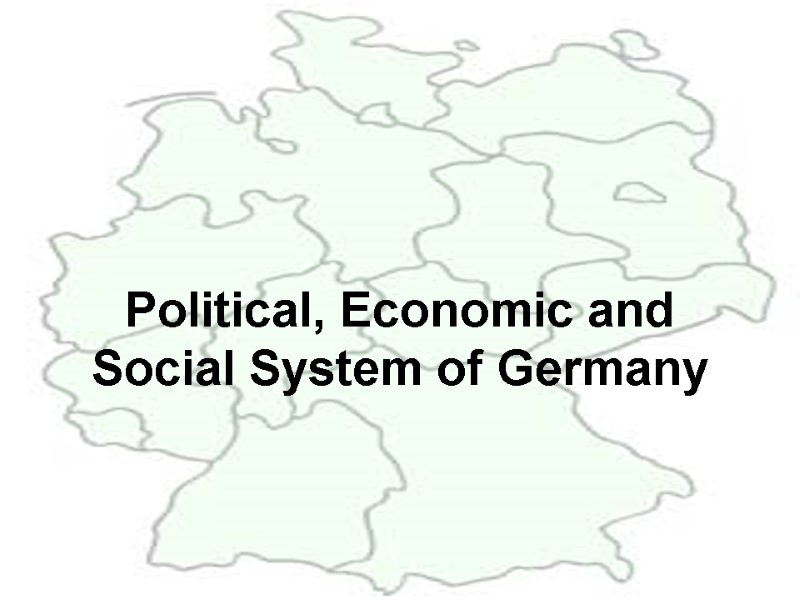 Political, Economic and Social System of Germany
Political, Economic and Social System of Germany
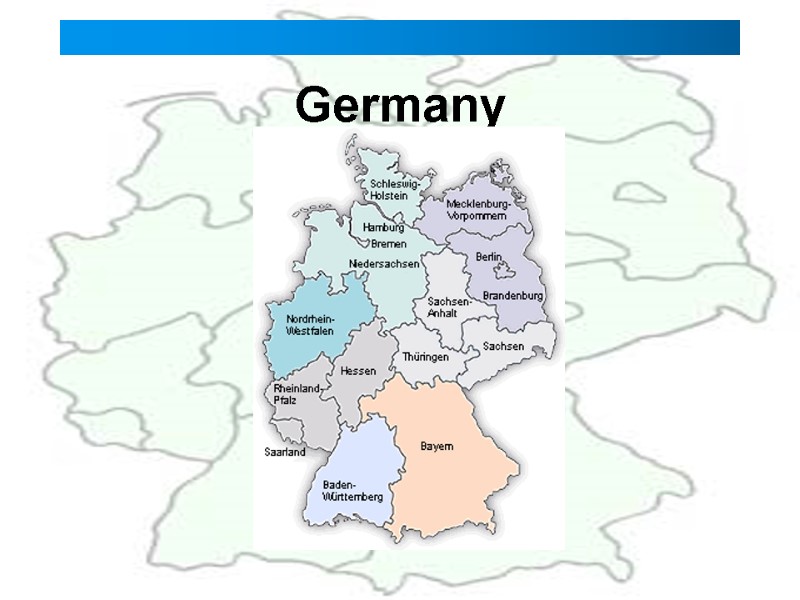 Germany
Germany
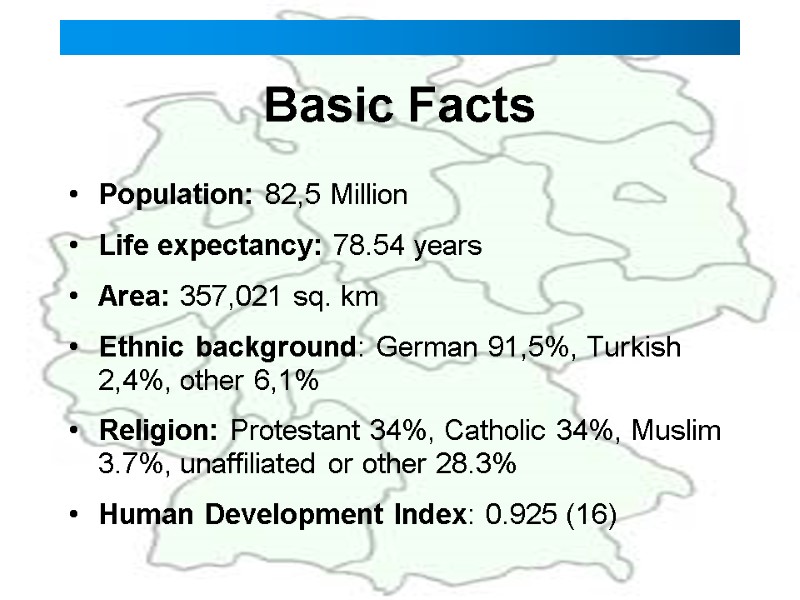 Basic Facts Population: 82,5 Million Life expectancy: 78.54 years Area: 357,021 sq. km Ethnic background: German 91,5%, Turkish 2,4%, other 6,1% Religion: Protestant 34%, Catholic 34%, Muslim 3.7%, unaffiliated or other 28.3% Human Development Index: 0.925 (16)
Basic Facts Population: 82,5 Million Life expectancy: 78.54 years Area: 357,021 sq. km Ethnic background: German 91,5%, Turkish 2,4%, other 6,1% Religion: Protestant 34%, Catholic 34%, Muslim 3.7%, unaffiliated or other 28.3% Human Development Index: 0.925 (16)
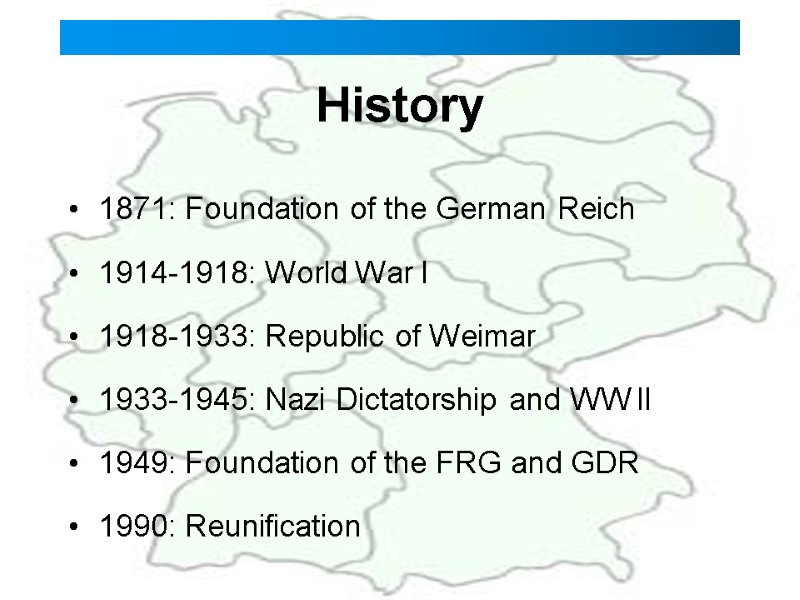 History 1871: Foundation of the German Reich 1914-1918: World War I 1918-1933: Republic of Weimar 1933-1945: Nazi Dictatorship and WW II 1949: Foundation of the FRG and GDR 1990: Reunification
History 1871: Foundation of the German Reich 1914-1918: World War I 1918-1933: Republic of Weimar 1933-1945: Nazi Dictatorship and WW II 1949: Foundation of the FRG and GDR 1990: Reunification
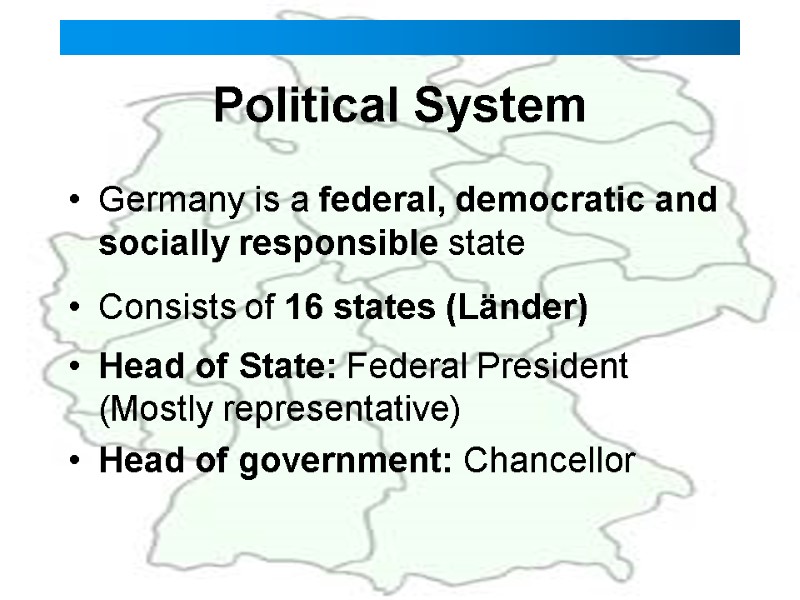 Political System Germany is a federal, democratic and socially responsible state Consists of 16 states (Länder) Head of State: Federal President (Mostly representative) Head of government: Chancellor
Political System Germany is a federal, democratic and socially responsible state Consists of 16 states (Länder) Head of State: Federal President (Mostly representative) Head of government: Chancellor
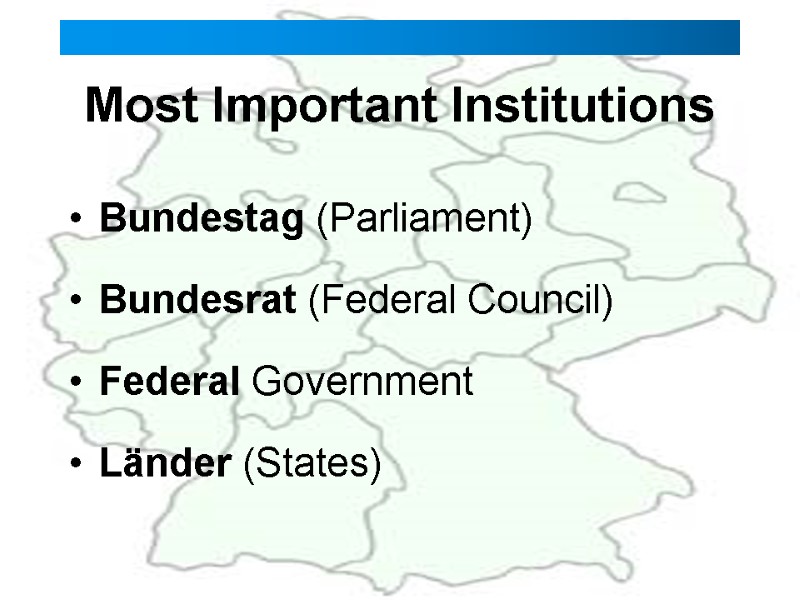 Most Important Institutions Bundestag (Parliament) Bundesrat (Federal Council) Federal Government Länder (States)
Most Important Institutions Bundestag (Parliament) Bundesrat (Federal Council) Federal Government Länder (States)
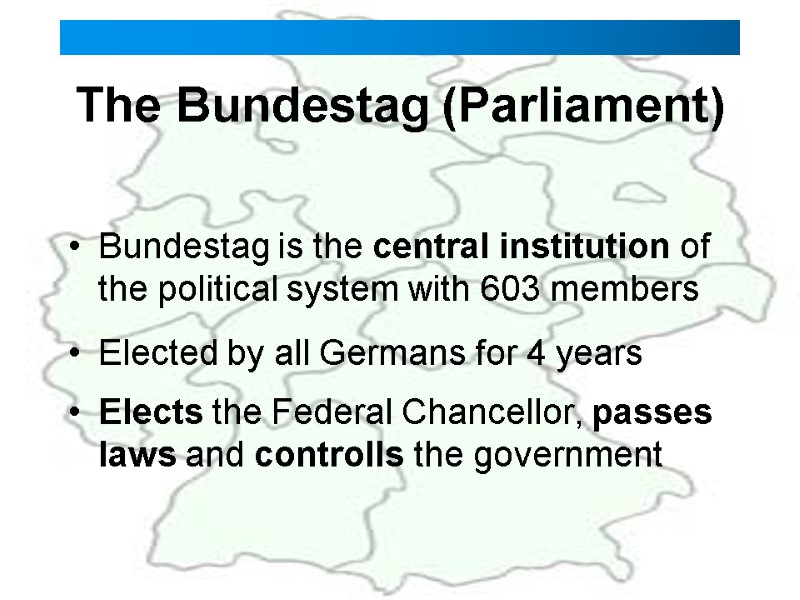 The Bundestag (Parliament) Bundestag is the central institution of the political system with 603 members Elected by all Germans for 4 years Elects the Federal Chancellor, passes laws and controlls the government
The Bundestag (Parliament) Bundestag is the central institution of the political system with 603 members Elected by all Germans for 4 years Elects the Federal Chancellor, passes laws and controlls the government
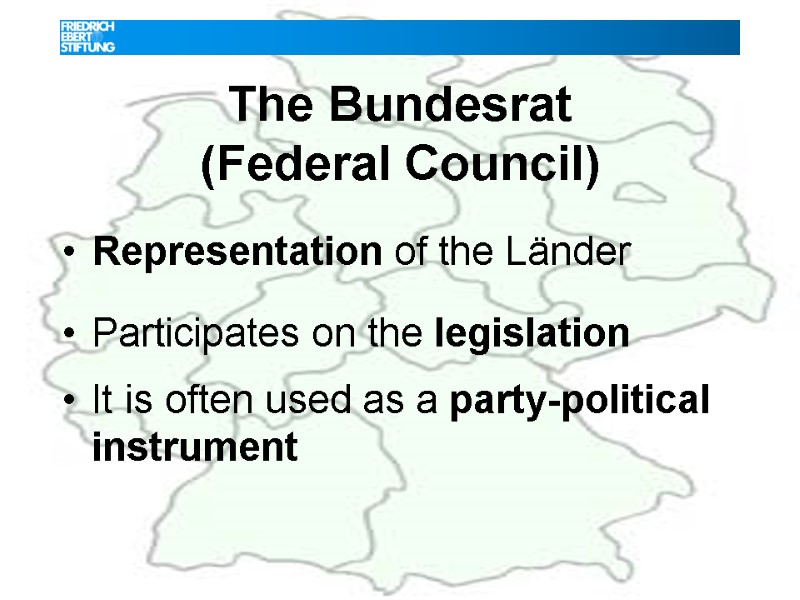 The Bundesrat (Federal Council) Representation of the Länder Participates on the legislation It is often used as a party-political instrument
The Bundesrat (Federal Council) Representation of the Länder Participates on the legislation It is often used as a party-political instrument
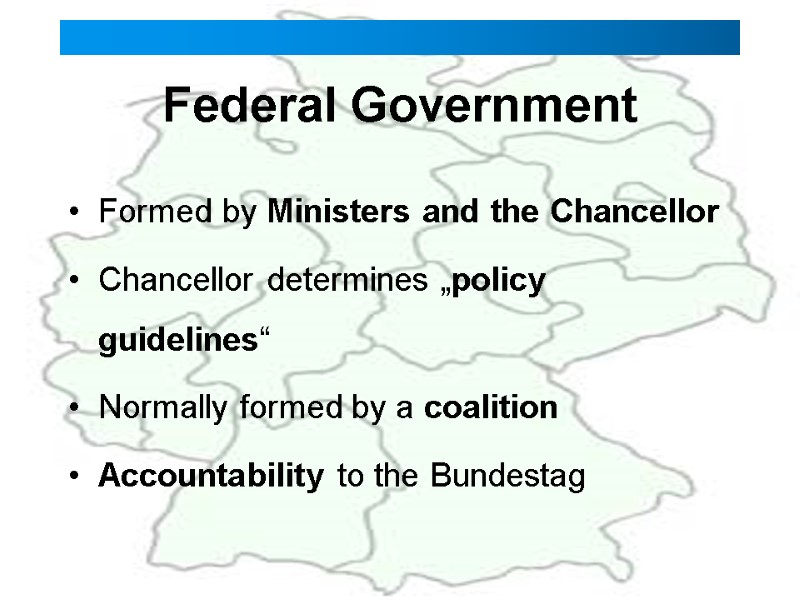 Federal Government Formed by Ministers and the Chancellor Chancellor determines „policy guidelines“ Normally formed by a coalition Accountability to the Bundestag
Federal Government Formed by Ministers and the Chancellor Chancellor determines „policy guidelines“ Normally formed by a coalition Accountability to the Bundestag
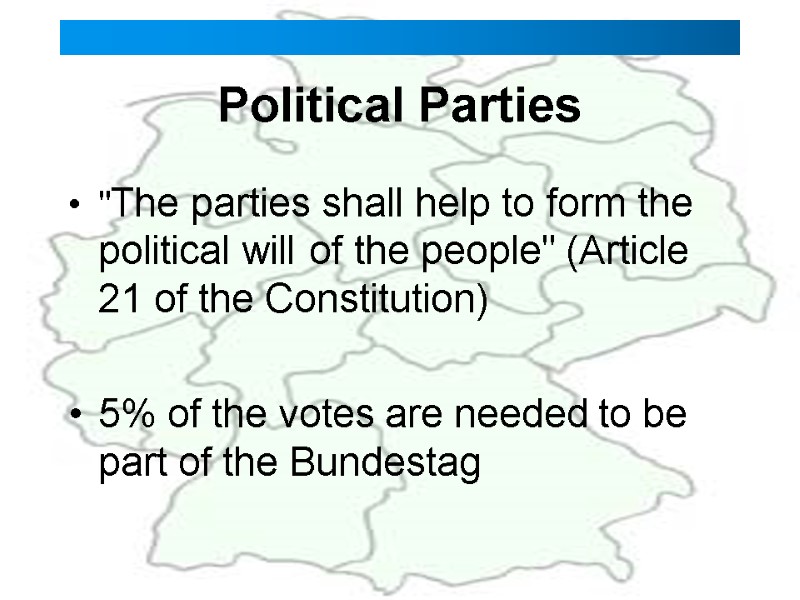 Political Parties "The parties shall help to form the political will of the people" (Article 21 of the Constitution) 5% of the votes are needed to be part of the Bundestag
Political Parties "The parties shall help to form the political will of the people" (Article 21 of the Constitution) 5% of the votes are needed to be part of the Bundestag
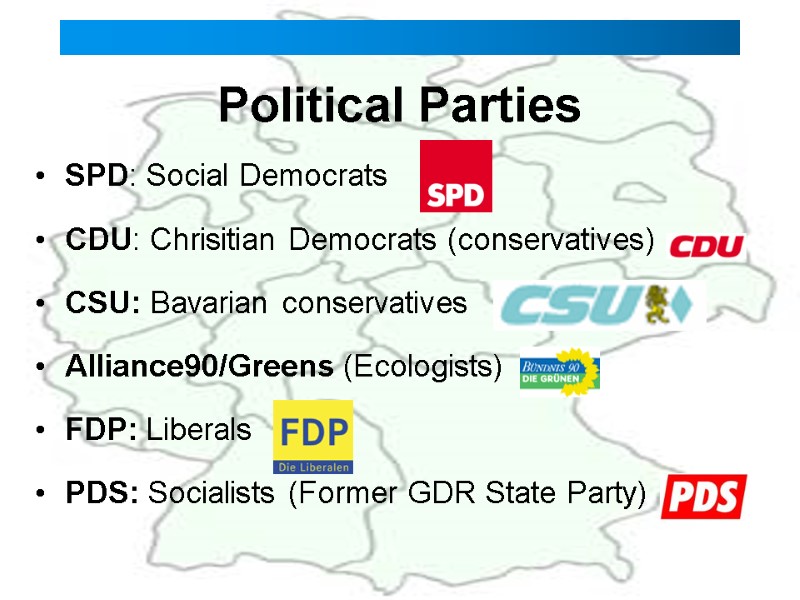 Political Parties SPD: Social Democrats CDU: Chrisitian Democrats (conservatives) CSU: Bavarian conservatives Alliance90/Greens (Ecologists) FDP: Liberals PDS: Socialists (Former GDR State Party)
Political Parties SPD: Social Democrats CDU: Chrisitian Democrats (conservatives) CSU: Bavarian conservatives Alliance90/Greens (Ecologists) FDP: Liberals PDS: Socialists (Former GDR State Party)
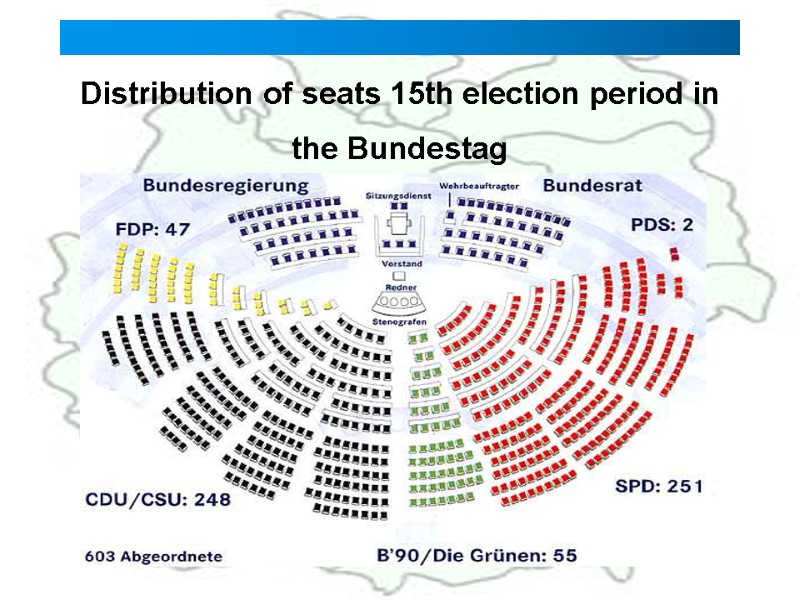 Distribution of seats 15th election period in the Bundestag
Distribution of seats 15th election period in the Bundestag
 Self-government of the Länder Länder are not Provinces Responsible for the administration Right to establish certain own laws Subsidiarity principle
Self-government of the Länder Länder are not Provinces Responsible for the administration Right to establish certain own laws Subsidiarity principle
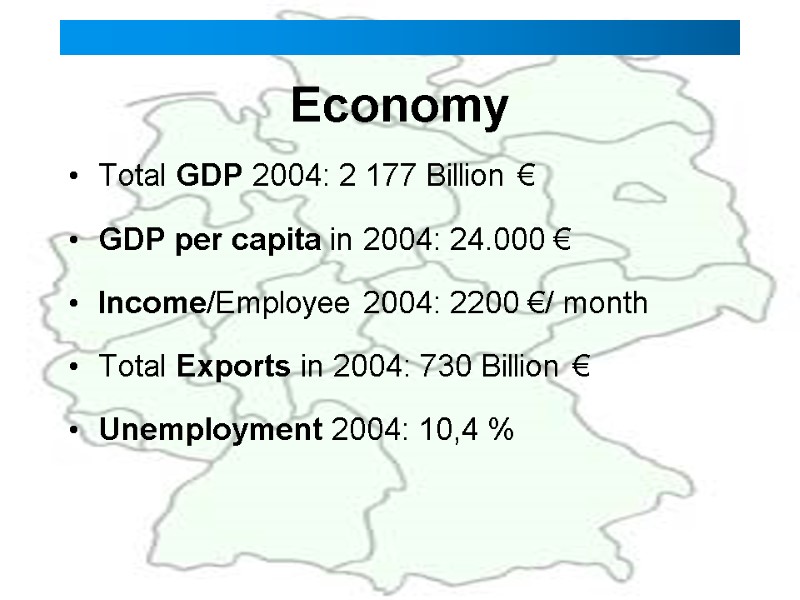 Economy Total GDP 2004: 2 177 Billion € GDP per capita in 2004: 24.000 € Income/Employee 2004: 2200 €/ month Total Exports in 2004: 730 Billion € Unemployment 2004: 10,4 %
Economy Total GDP 2004: 2 177 Billion € GDP per capita in 2004: 24.000 € Income/Employee 2004: 2200 €/ month Total Exports in 2004: 730 Billion € Unemployment 2004: 10,4 %
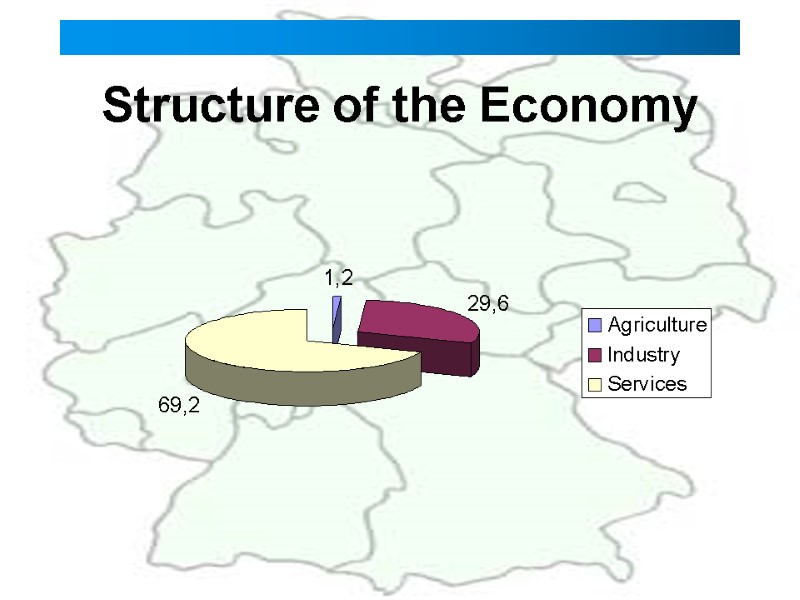 Structure of the Economy
Structure of the Economy
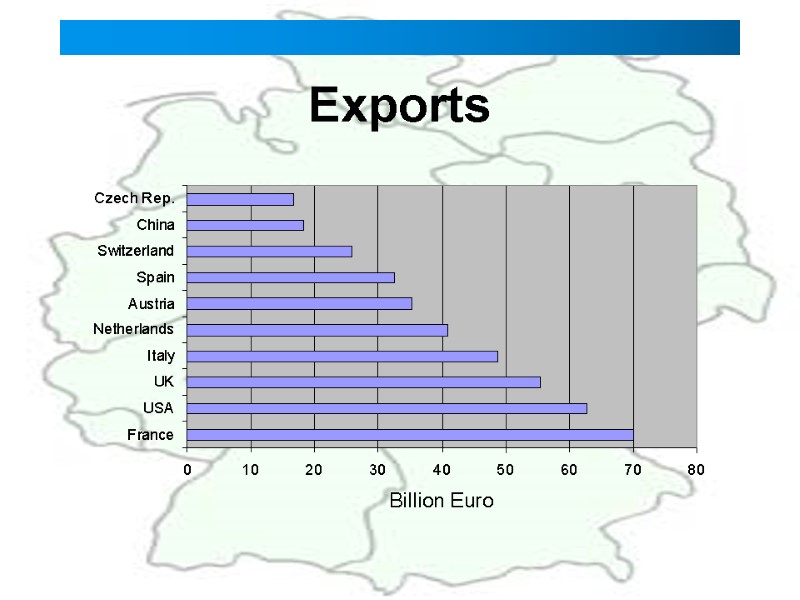 Exports
Exports
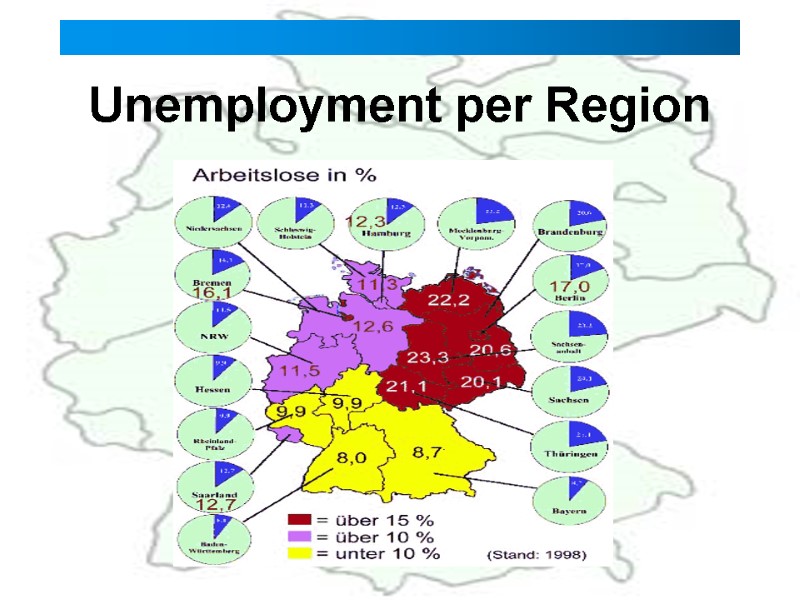 Unemployment per Region
Unemployment per Region
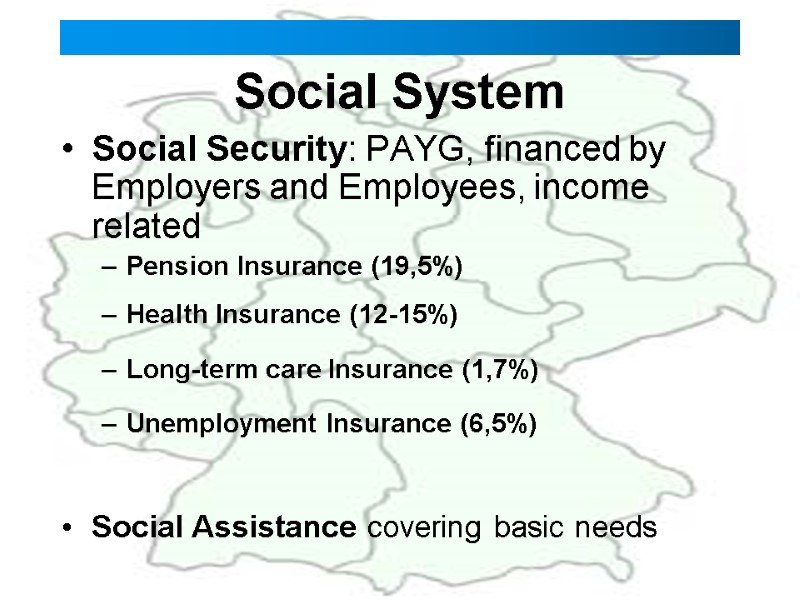 Social System Social Security: PAYG, financed by Employers and Employees, income related Pension Insurance (19,5%) Health Insurance (12-15%) Long-term care Insurance (1,7%) Unemployment Insurance (6,5%) Social Assistance covering basic needs
Social System Social Security: PAYG, financed by Employers and Employees, income related Pension Insurance (19,5%) Health Insurance (12-15%) Long-term care Insurance (1,7%) Unemployment Insurance (6,5%) Social Assistance covering basic needs
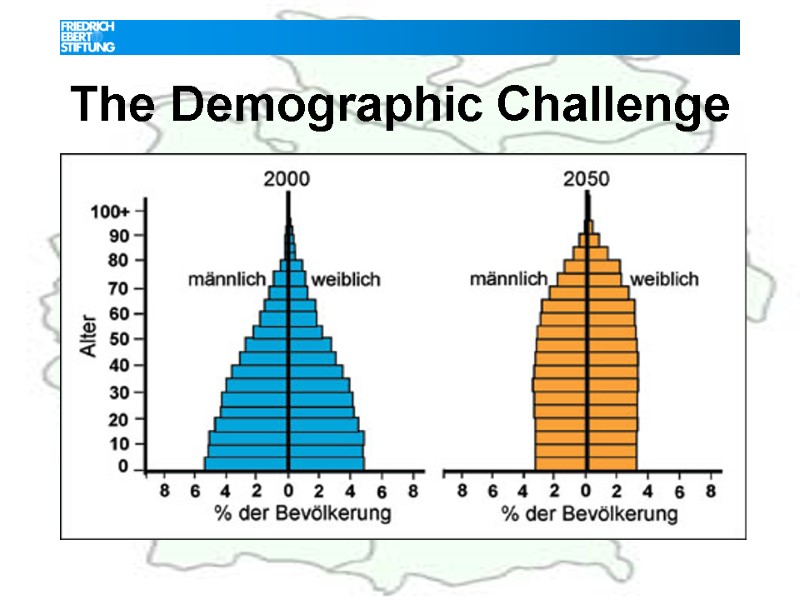 The Demographic Challenge
The Demographic Challenge
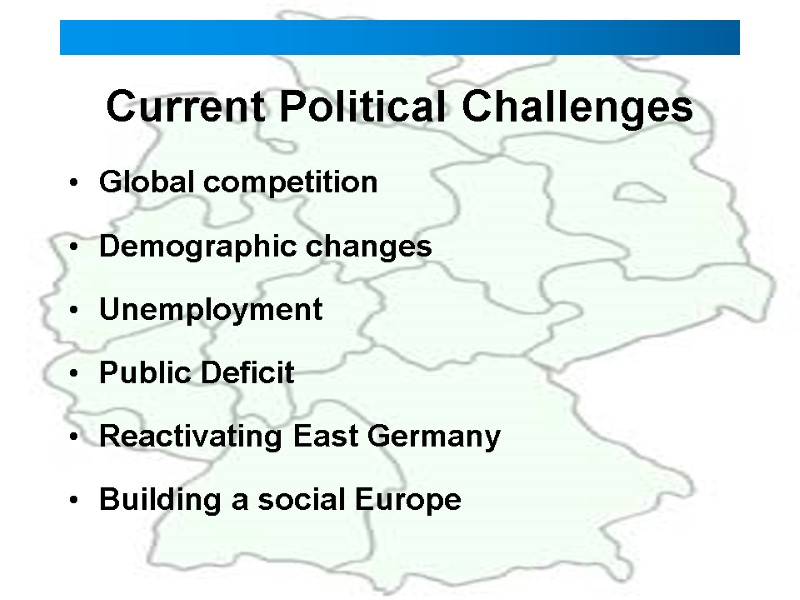 Current Political Challenges Global competition Demographic changes Unemployment Public Deficit Reactivating East Germany Building a social Europe
Current Political Challenges Global competition Demographic changes Unemployment Public Deficit Reactivating East Germany Building a social Europe
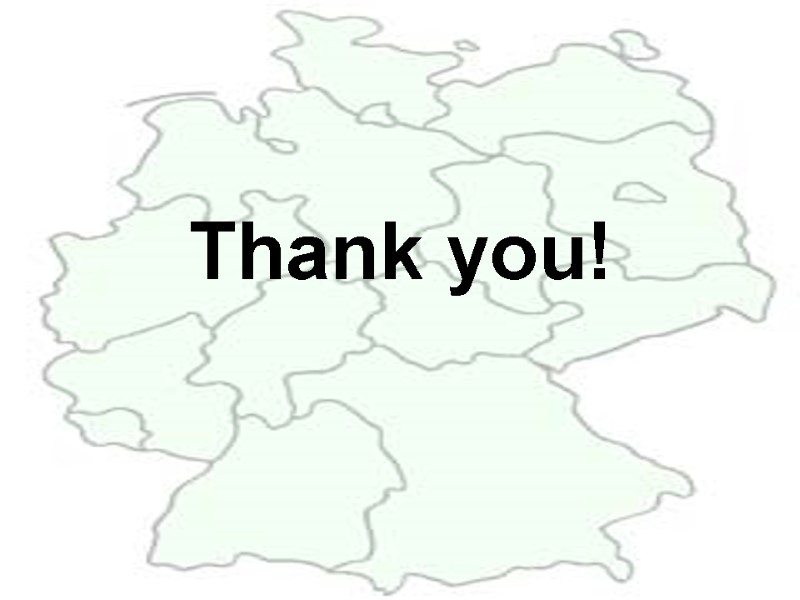 Thank you!
Thank you!











































